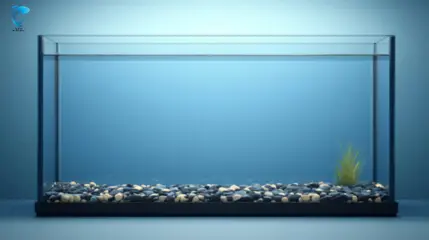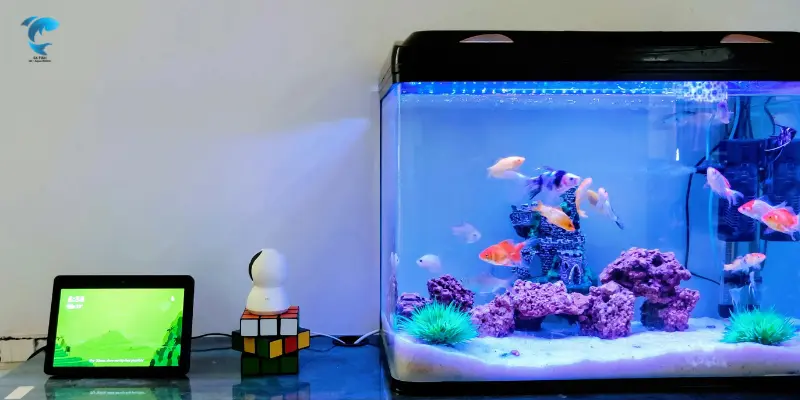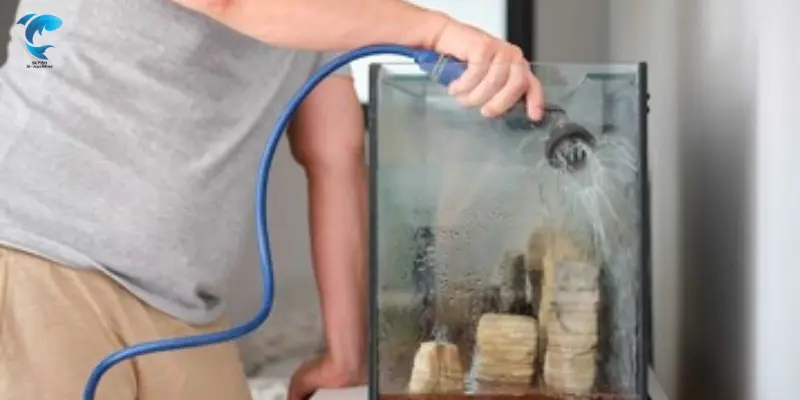How to Clean a Freshwater Fish Tank (Step-by-Step Guide)
Published: 1 Sep 2025
If you own a freshwater aquarium, keeping it clean isn’t just about aesthetics—it’s about maintaining your fish’s health and ensuring your tank thrives. A clean tank ensures your fish live in a safe, balanced environment, free from harmful toxins and algae buildup. Neglecting regular maintenance can lead to murky water, stressed fish, and even damage to equipment.
In this guide, you’ll learn how to clean a freshwater fish tank properly. We’ll cover the tools you need, a step-by-step cleaning routine, common mistakes to avoid, and tips to make maintenance easier. By the end, you’ll feel confident about creating a cleaning schedule that keeps your aquarium crystal clear and your fish happy.
Why Cleaning Your Freshwater Fish Tank Matters
Healthy Environment for Fish
As a fish owner, you play a crucial role in maintaining a healthy environment for your aquatic pets. While fish may seem low-maintenance, their survival ultimately depends on the quality of the water in which they live. Waste, uneaten food, and decaying plants release ammonia, which can quickly harm fish. Regular cleaning helps maintain a balanced water chemistry, keeping your aquatic pets healthy and stress-free.
Preventing Algae and Toxins
Algae naturally occur in tanks, but excessive growth can make the water cloudy and deplete oxygen levels. Without cleaning, you also risk toxin buildup, such as nitrates and nitrites, which can make your fish sick. Cleaning keeps these under control.
Extending Tank and Equipment Life
Filters, heaters, and lights function more efficiently and last longer in a clean tank. Dirt and debris shorten the life of your equipment. Routine cleaning is not just good for the fish—it protects your investment in the aquarium itself.
What You’ll Need Before Cleaning
Before you start scrubbing, gather your supplies. Having everything ready makes the process smooth and stress-free:
- Gravel vacuum or siphon – For removing waste and debris from the substrate.
- Algae scraper or magnetic cleaner – For cleaning the inside of the glass tank.
- Bucket (separate for aquarium use only) – For water changes.
- Water conditioner – To treat tap water before it is added back into the system.
- Fish net – For gently moving fish if needed.
- Replacement filter media – Only when the old one is too dirty or worn out.
Step-by-Step Guide: How to Clean a Freshwater Fish Tank
Cleaning doesn’t mean taking everything apart. The key is to remove dirt while preserving beneficial bacteria. Here’s a safe, step-by-step routine:
Step 1 – Wash Your Hands and Prepare Supplies
Rinse your hands thoroughly with water (no soap or lotion) to avoid introducing chemicals. Lay out your tools near the tank for easy access.
Step 2 – Turn Off Equipment (Heater, Filter, Lights)
Switch off all equipment to protect both yourself and the devices. Running the heater without water can cause it to crack, while filters shouldn’t run dry.
Step 3 – Remove Debris and Uneaten Food
Use a net or siphon to scoop out floating debris. This makes the water less cloudy and prevents it from decomposing further.
Step 4 – Clean the Glass (Inside & Outside)
Use an algae scraper or magnetic cleaner on the tank walls. For the outside, use a damp cloth—avoid glass cleaners, as they are toxic to fish.

Step 5 – Vacuum Gravel and Substrate
Gravel acts like a waste trap. Use a gravel vacuum to remove fish waste, leftover food, and decaying matter from the aquarium. This prevents ammonia spikes.
Step 6 – Partial Water Change (25–30%)
Remove about a quarter to a third of the tank water. This refreshes the environment without shocking your fish. Always use treated water when refilling.
Step 7 – Clean Filter Media (Without Killing Beneficial Bacteria)
Rinse the filter sponge or cartridge in a bucket of old tank water—not under the tap. Tap water contains chlorine, which kills helpful bacteria that keep your water balanced.
Step 8 – Refill Tank and Add Water Conditioner
Slowly add treated water back to the tank. Use a plate or bowl to avoid disturbing the gravel and plants when pouring water in.
Step 9 – Restart Equipment and Monitor Fish
Turn everything back on. Double-check that your heater and filter are running correctly. Watch your fish for a few minutes to ensure they’re comfortable.

Common Mistakes to Avoid When Cleaning a Freshwater Tank
- Over-cleaning – Stripping away all bacteria can cause a dangerous ammonia spike.
- Using soap or chemicals – These leave residues toxic to fish. Stick to aquarium-safe cleaners.
- Changing all the water at once – Fish can’t handle sudden changes in water chemistry.
- Aggressively cleaning the filter – Don’t replace filter media too often; rinse it gently instead.

How Often Should You Clean Your Freshwater Fish Tank?
The frequency of cleaning your tank depends on its size, the number of fish, and the type of filtration system. To make things easier, here’s a quick breakdown:
| Task | Weekly | Monthly | As Needed |
|---|---|---|---|
| Remove uneaten food & debris | ✅ | – | – |
| Wipe down inside glass (algae) | ✅ | – | – |
| Partial water change (20–30%) | ✅ | – | – |
| Test water parameters (pH, etc.) | ✅ | – | – |
| Vacuum gravel/substrate | ✅ | – | – |
| Clean/rinse filter media | ✅ | – | – |
| Inspect equipment (heater, pump) | – | ✅ | – |
| Deep-clean decorations/plants | – | – | ✅ |
| Replace worn filter media | – | – | ✅ |
Your tank size and the number of fish also play a role. Smaller tanks and those with more fish require more frequent cleanings because waste accumulates more quickly.
Tips for Easier Freshwater Tank Maintenance
| For Easier Freshwater Tank Maintenance |
|---|
|
Final Thoughts
Learning how to clean a freshwater fish tank isn’t complicated once you have the right tools and a consistent routine. Regular maintenance keeps your water clear, your fish healthy, and your equipment working smoothly.
Start with partial weekly water changes, avoid common mistakes, and use time-saving tools like algae magnets. A clean tank not only looks better—it creates a thriving environment your fish will love.
FAQs: How to Clean a Freshwater Fish Tank
When cleaning a freshwater fish tank, the key is to perform partial water changes instead of replacing all the water at once. Always remove only 20–30% of the water to avoid shocking your fish with sudden changes in water chemistry. Use a gravel vacuum to clean the substrate and an algae scraper to wipe the glass, keeping fish inside the tank during the process. Please ensure that any new water you add is treated with a water conditioner to remove chlorine and chloramines before pouring it back into the system.
Most aquariums need a partial cleaning once a week, especially if they house multiple fish or have a small tank size. Weekly maintenance usually includes removing debris, wiping the glass, and changing 20–30% of the water. More thorough tasks, like rinsing filter media or deep-cleaning gravel, can be done monthly. A consistent cleaning schedule is essential because irregular maintenance often leads to algae growth, murky water, and unhealthy fish.
Yes, tap water can be used, but it must be treated before adding it to your aquarium. Tap water usually contains chlorine or chloramine, which can be toxic to fish and beneficial bacteria. Using a good water conditioner removes these harmful chemicals, making the water safe to drink. Always check the temperature of the tap water to ensure it matches the tank’s current conditions, preventing shock to your fish.
You generally do not need to remove fish when cleaning a freshwater aquarium. Most cleaning tasks, such as water changes, algae removal, and gravel vacuuming, can be performed with fish still in the tank. Removing fish often causes more stress than leaving them in, as netting and transferring them can lead to injury. Only move your fish if you need to perform central cleaning or tank repairs that could significantly disturb them.
The best way to clean gravel in a freshwater fish tank is to use a gravel vacuum or siphon. Place the siphon into the gravel, allowing it to pull up debris, fish waste, and leftover food while leaving the gravel in place. This method keeps the substrate clean without the hassle of removing and rinsing it. Gravel vacuuming should be part of your regular tank maintenance to prevent ammonia spikes and foul odors.
To clean the inside glass, use an algae scraper or magnetic algae cleaner designed for aquariums. These tools remove algae and buildup without scratching the glass or releasing harmful chemicals. For the outside of the glass, wipe with a damp cloth or use vinegar-based sprays, but avoid commercial glass cleaners, as they often contain toxic ingredients. Regular glass cleaning not only improves visibility but also enhances the overall look of your aquarium.

SK Fish is your trusted source for practical fish care tips and delicious seafood recipes. Our team is dedicated to providing reliable, well-researched content for fishing enthusiasts and home cooks alike.

- Be Respectful
- Stay Relevant
- Stay Positive
- True Feedback
- Encourage Discussion
- Avoid Spamming
- No Fake News
- Don't Copy-Paste
- No Personal Attacks



- Be Respectful
- Stay Relevant
- Stay Positive
- True Feedback
- Encourage Discussion
- Avoid Spamming
- No Fake News
- Don't Copy-Paste
- No Personal Attacks





